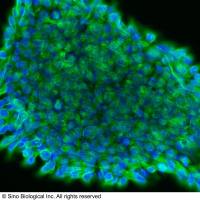Footprinting with Exonuclease III
互联网
856
Within the last few years footprinting techniques have become increasingly important in the study of protein-nucleic acid interactions. This is partly the result of a fast-growing number of known nucleic acid binding proteins but also because of an increase in the available probes that can be chosen in order to tackle a specific problem. There are two major groups of probes-the chemical probes and the enzymatic probes. These enzymatic probes, such as DNase I or exonuclease III, have the advantage of acting specifically at the DNA. Chemical probes are often less specific and react also with the protein. This can disturb the correct interaction of protein and DNA. For the study of very fragile protein-DNA complexes, therefore, enzymatic probes are often preferable.







